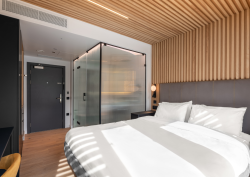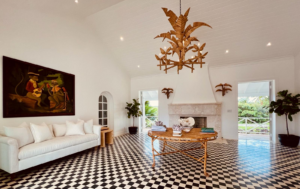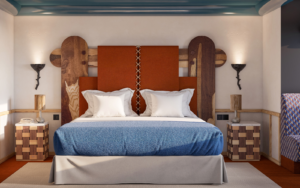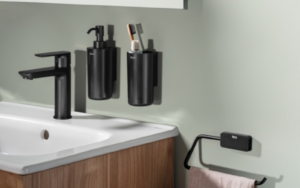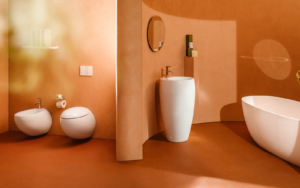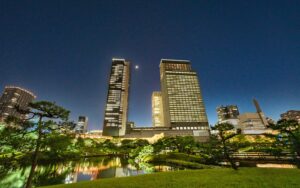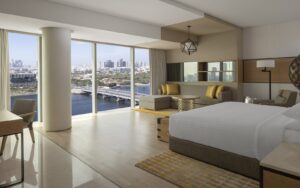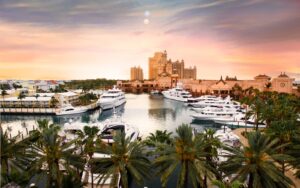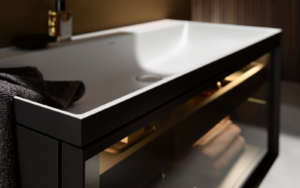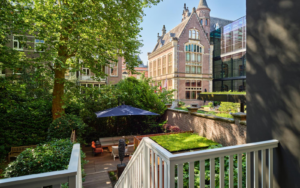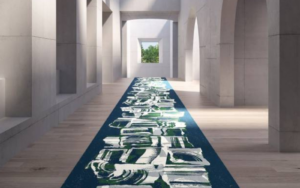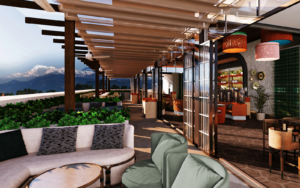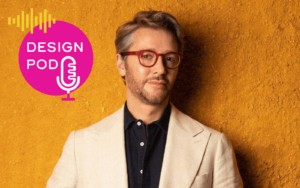Established in 2003, Ica has spent 20 years building both projects and its reputation and is regarded as one of the world’s leading hotel architecture and design practices. Editor Hamish Kilburn caught up with Ian Burleigh, Executive Chairman, Ica, to find out a little more about the story behind the studio…
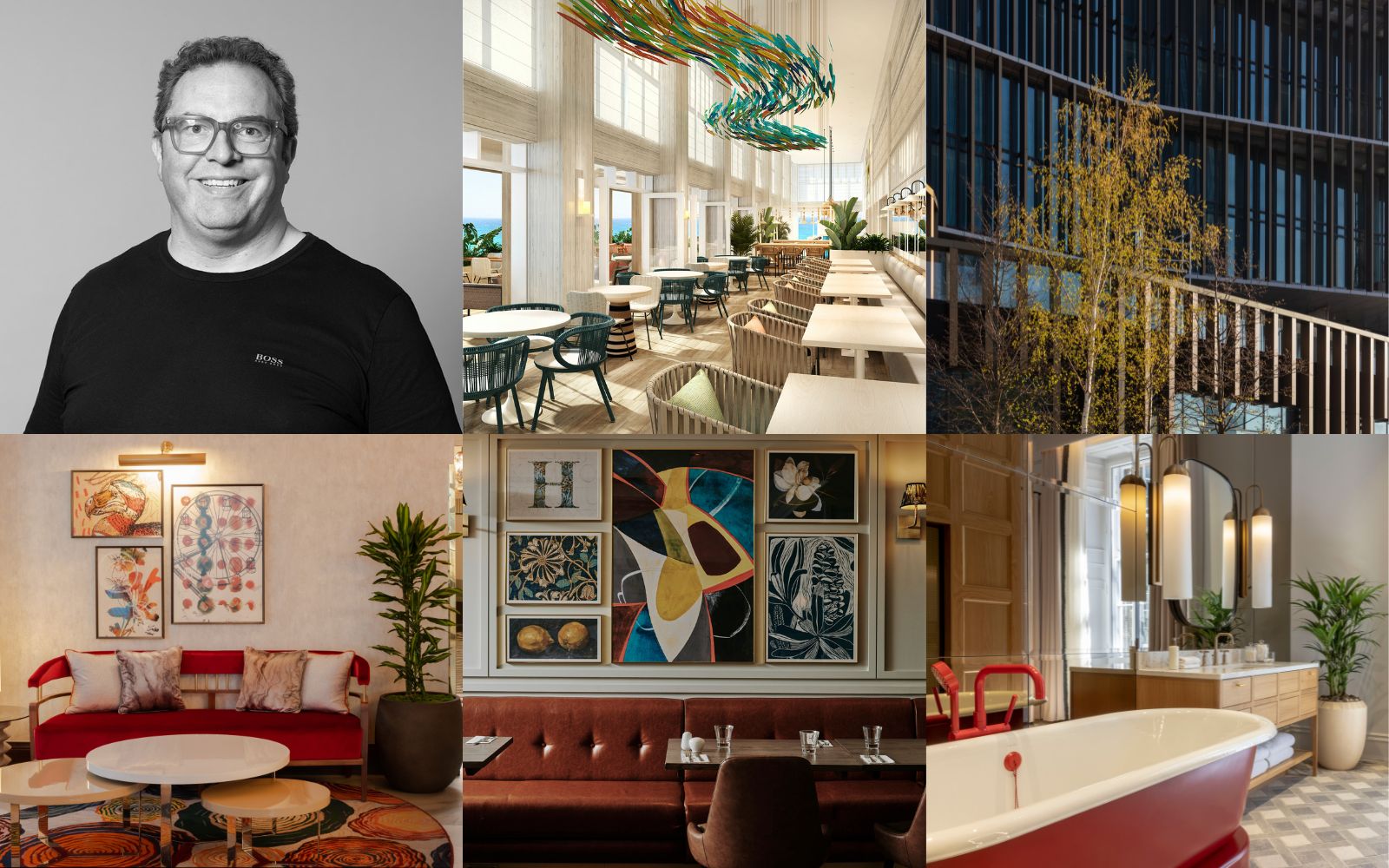
Ica studio has a 50-strong team of both architects and interior designers based between Glasgow and London with a list of clients that span both the globe and the brands in the hospitality arena. Working from the starting point of designing hospitality businesses rather than merely the buildings has allowed the studio to develop unique offerings with some well-designed results.
Hamish Kilburn: Can you explain the ethos of Ica Studio – what’s its personality?
Ian Burleigh: We love hospitality and thread that through everything we do. It’s the ethos of our studio, the way we treat each other, the way we welcome, the way we serve our clients and relationships across the community. It helps us hold to norms less rigidly, it’s the fuel of creativity. It makes us easy to get along with, find solutions to resolve problems and give candid support to our clients.

Image caption: Virgin Hotels Edinburgh | Image credit: Ica
HK: One of your team, Kerry, received Architect of the Year last year for her role on Virgin Edinburgh. Just how large a project was that for Ica?
IB: Well, this was certainly one of the longest projects we’ve done. 10 years from initial sketches to completion! Sites don’t get more sensitive, a World Heritage site, a rare gap site right in the heart of the Old Town of Edinburgh. Add to that the presence of three listed buildings and fragile gap sites to thread in new buildings, with a four-storey level difference from front to back and among the oldest archaeology ever found in Scotland. The planning process was incredibly intense and high profile, but we stuck to our guns and delivered a great development return for our client, as well as a building of real architectural merit.
Virgin was actually quite late on the scene and drew focus to the interiors, which are amazing, but I’m so glad the architectural merit has been recognised, not only in Kerry winning Architect of the Year at The Brit List Awards 2022, but also more recently at the Scottish Property Awards.
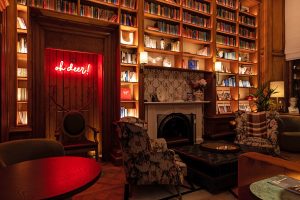
Image caption: Virgin Hotels edinburgh | Image credit: Ica
HK: There seems to be a demand among brands to open inside heritage buildings. What would you say is driving this demand?
IB: Hotels and heritage buildings are a great match. First of all is the opportunity. Former public buildings of architectural importance can sometimes struggle to find a contemporary function with a commercial return. Hotels can be more flexible than other building types which might struggle to occupy them with the same sensitivity in conversion and renovation. Heritage buildings also offer great design opportunities and character to a new hotel. The juxtaposition of contemporary interiors and more formal classical architecture creates energy and drama, a great platform for a hotel to develop personality and identity. Working so much in London and Edinburgh has helped us develop considerable expertise in the conversion of heritage buildings, which we are now using globally in locations such as Rome.
HK: Let’s talk about you. What’s your story and how was Ica born?
IB: Good question since this year is Ica’s 20th birthday! Ica was born when three friends with complementary skills got together, Ian, Chris and Alistair, now you know where the name ‘Ica’ came from. We wanted to create a studio specifically shaped around the demands of hotel design. We wanted our studio to define the activity of designing a business and not just designing a building. Blending the skills of design creativity and technical knowledge with commercial, operational, financial and hotel experience, allowed the three of us to design five major hotels in our first year from a small room.
After an initial focus on architecture, we quickly realised the relationship with interior design was key. We established a separate interior team, so they had the freedom to independently establish their style and vision. While we have maintained the two teams, we have grown to realise the strength of having them both in the same studio. Architects learn from interior designers how to think about buildings from the inside out, to better understand the customer journey. Interior designers learn from architects on seeing the bigger picture and how to communicate design information in a commercial environment.
Growth was consistent and steady for the first ten years when we introduced more sophisticated management and appointed, Susannah our MD and Amanda who heads our Interiors team. As hotel specialists, we have always covered all hotel sectors from lifestyle and budget to luxury, and also covered the whole of the UK. Our most recent growth has been in international projects which tend to focus more on upscale and luxury, currently, almost half of our work is overseas, across Europe and the Caribbean.

Image caption: The Gantry | Image credit: Ica
HK: What does luxury mean to you?
IB: I remember when I was a young architect hearing Gordon Campbell Gray (a fellow Glaswegian) speak about luxury hotels. I was very inspired and the takeaway for luxury was ‘Space, Service and Style’. Generosity of space is indeed a luxury today and more often than not compromised by economics. Service is very high on my list. I only really remember a luxury hotel when the service is personal, warm and thoughtful. Style is where we come in and is a real skill to achieve.
Style and design can work on so many levels, overt and subliminal, to create mood, ambiance, place and personality. We added a few benchmarks of our own and one is that a luxury hotel must be better than home, ‘I love the design but how can I watch Formula 1?’ Understanding the guest is key, old style grand hotels with expensive finishes just don’t make the cut anymore. Authenticity, experience, wellness and sustainability are now more relevant components for the discerning traveller, where a luxury hotel is probably the destination and not just part of the journey. Reflecting and curating the customer’s tribe, personality, culture and identity, has allowed new energy and variety in luxury hotels and an almost endless reason for them to exist in new places.
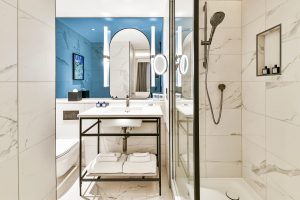
Image caption: Lost Property | Image credit: Lost Property
HK: Another one of your completed projects last year was Lost Property in St Pauls. Where were the design opportunities in this project?
IB: Lost Property is all about the location and the interior, very different to Virgin Hotels Edinburgh. This is a city island, with Ludgate Hill on one side and narrow lanes on the other sides, a new building hidden behind the original façades. Within this wrapper, the interior is accentuated with Art Deco and mid-century design with shots of bold colour, sculptural pieces and luxe materials, a stylish sanctuary in the heart of the city. A destination for those who love travel, art and culture.
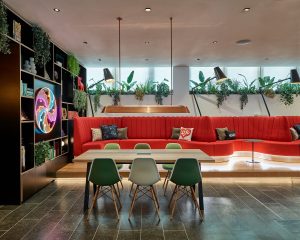
Image caption: CitizenM | Image credit: Ica
HK: You work with a lot of brands – Virgin, Marriott, Hilton etc. How, from your perspective have you seen these brands develop in terms of how they use design to amplify their characters?
IB: All the brands offer something different and continue to evolve. Successful brands understand their customers and take care of them. This can be a valuable resource for independent or investor lead hotel developments. At the affordable end of the spectrum brands like CitizenM have a very loyal following and the customer knows exactly what they want and they feel at home.
We recently completed the CitizenM in London Victoria and design is a sophisticated and key element for this brand. Luxury and upscale brands tend to be much more discreet. Lost Property and The Gantry, for instance, are the key identities at their respective locations in St Paul’s and Stratford’s Olympic Park, with a Hilton customer base through its Curio Collection. Right now we are seeing much more fluidity with brands, less standardisation and less hierarchy.
We like a contextual approach, to design the right hotel for the location, market and client vision. For example, The Reach at Piccadilly, set to open later this year, a new upscale Tribute by Marriott Hotel, stands out for its incredible location in the heart of the bustling city of Manchester. More flexibility from brands can help creative opportunity. On some levels brands are best at maintaining standards of life safety, operations, customer touch points and marketing and a lighter hand in design standardisation is often a good thing.
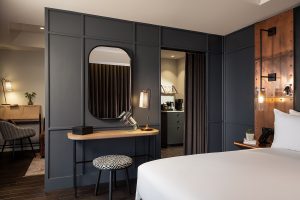
Image caption: The Gantry | Image credit: The Gantry
HK: What is the biggest challenge facing the hotel design and development industry at the moment?
IB: Construction and finance costs have been the biggest challenge for a few years now. I’ve seen these cycles before and there are always compensatory factors such as higher valuations and increased revenue. These trends can drive the type of development such as the balance of conversion and refurbishment to new build. Ica have been pioneers in modular construction for many years and this for many, is part of the solution. Modular was associated with mid-scale for a long time, but we have been pioneering modular in luxury and the cost savings for luxury hotels are higher as well as opening up more remote parts of the world to development.
There has been real growth in RevPAR, allowing recovery to pre-pandemic levels in most markets. With the return of business travel, group travel and China opening up, we anticipate strong demand for hotel development in the medium and long term.
HK: What have we got to look forward to from Ica this year?
IB: Current projects include The Reach in Manchester, luxury hotels in Liverpool and Rome, three hotels in Turks and Caicos in the Caribbean– two of them are luxury, three new prototype – a spa resort in Lancashire, and I know this isn’t a hotel but we are very excited to be designing housing using our modular experience for Ukraine at the end of the war.
Main image credit: Hotel Designs/Ica

